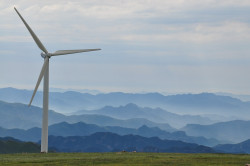Approaching energy crowdfunding with eyes wide open
In 2016, for a few hours, all of Germany ran only on renewable energy, demonstrating that one day, the release of carbon dioxide into the atmosphere could really be avoided. The remarkable thing here is that a substantial amount of this energy was not produced by the large utilities, but by citizens who installed solar panels on their roofs, or who operated small wind farms on their properties. Some of these plants were financed through crowdfunding, which allows roof space or available land to be turned into a profitable business. However, as in any type of investment, it has opportunities and pitfalls. youris.com met Sissy Windisch, from the German company Green Crowding, who published a guide for new small investors, to allow them to make the best decisions. The document was released under the EU project CrowdFundRES. Why did you see a need for writing these guidelines? Many people who are not professional investors put a lot of time and effort into researching, analysing and comparing information before they invest. So we thought it was important to help them make an informed decision, and the best approach would be to write a guide so that they ask the right questions, not just about projects and platforms, but also about themselves. For example, do I understand enough to make this investment? We see more and more projects and crowdfunding platforms out there. So it’s just to help people navigate, and understand what they’re doing and that a platform must be regulated. Anybody can check these regulations among other things. This is a different kind of crowdfunding, unlike what platforms such as Kickstarter do? I'm glad you asked that question because there's a lot of misunderstanding. With Kickstarter you donate money, so a comic book for example can be published, or you just want an artist to keep on creating art. Instead, the type of crowdfunding we are interested in is debt-based, which means that you get your money back plus interest. If you finance a solar roof on a school for five years, you get 3% every year and at the end of five years you get your money back. So this is an investment. However, there is an aspect of debt funding that makes it similar to Kickstarter: you invest in something you have a strong interest in. Totally, and it's the power of the collective good. Even the Statue of Liberty in the United States was crowdfunded. People got together, gathered the money and funded something. And now with the technology you can do it online; you can do it more efficiently. And it’s basically a democratic approach. You don’t need an intermediary like a bank to make the investment decisions for you. You look around and then say: “I like that project and that’s what I want my money to work for.” Could you tell us more about debt-based crowdfunding? Debt-based funding is already one of the largest types of crowdfunding. I would say one of the biggest areas in terms of funding volume at the moment is real estate. I think for 2016 alone the funding was estimated at around 3.5 billion dollars. But other popular areas are projects with predictable returns, whatever the type of project. So they would include peer-to-peer lending; for example if I want to repay my credit card debt I could ask other people to lend me money. We see this evolving in more and more areas: small businesses, college loans, science projects, infrastructure… And green energy, which is quite popular. Read more: http://www.crowdfundres.eu/news/approaching-energy-crowdfunding-eyes-wide-open/
Keywords
crowdfunding, renewables, energy, finance
Countries
Germany



